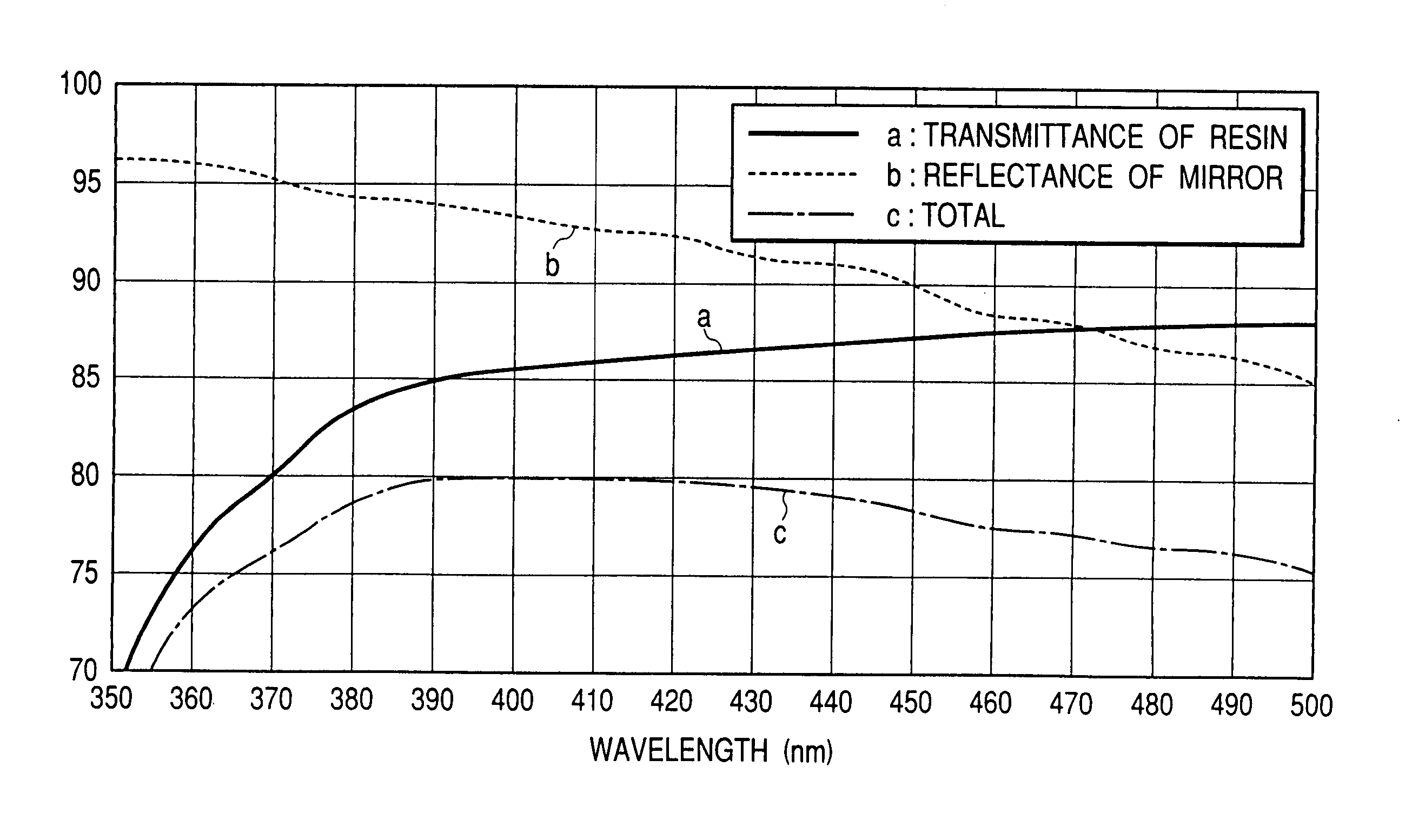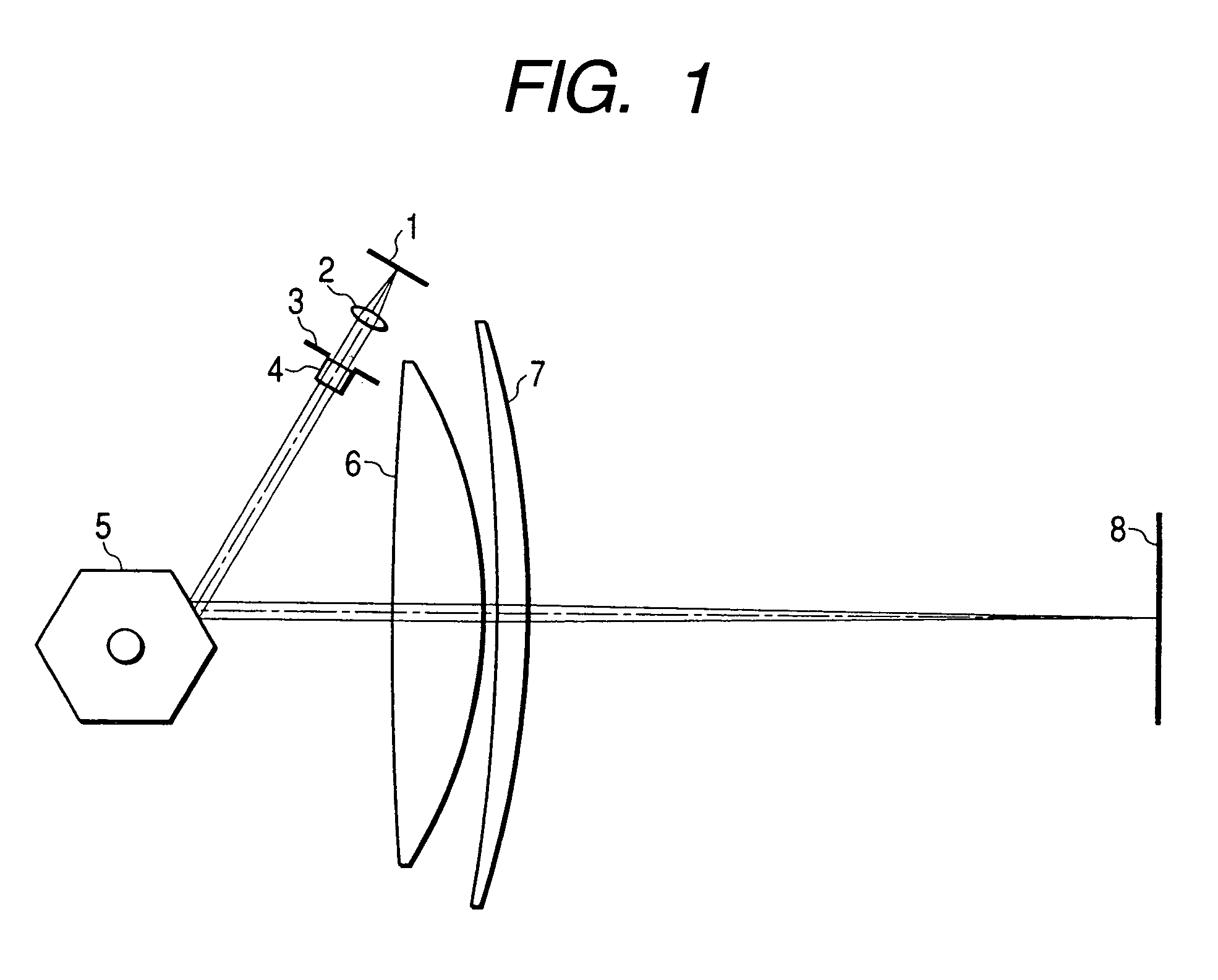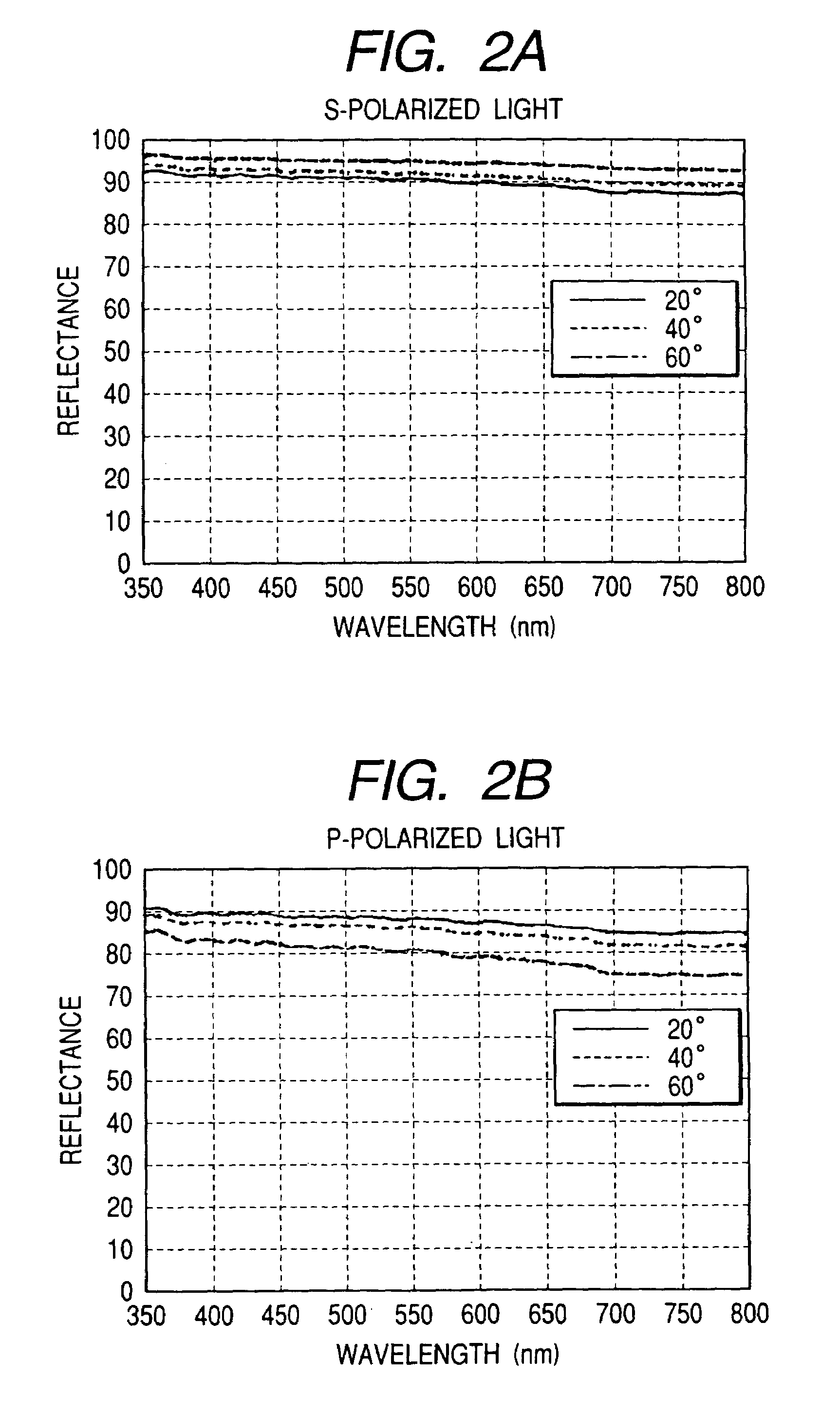Optical scanning apparatus and image forming apparatus using the same
a scanning apparatus and optical technology, applied in the field of optical scanning apparatus, can solve the problems of increasing cost factors, high working cost, and considerable load on the laser itself, and achieve the effect of reducing non-uniform distribution and improving the stability of light quantity
- Summary
- Abstract
- Description
- Claims
- Application Information
AI Technical Summary
Benefits of technology
Problems solved by technology
Method used
Image
Examples
first embodiment
[0043]FIG. 1 is a schematic cross-sectional view of an essential portion of an optical scanning apparatus in which features of the present invention are best shown. Divergent rays of light from a semiconductor laser 1, i.e., a light source, are converted into an approximately parallel light beam by a collimator lens 2 and the diameter of the light flux is reduced by an aperture 3 to obtain a desired spot diameter. The semiconductor laser 1 used in this embodiment is a gallium nitride semiconductor laser having an oscillation wavelength of 408 nm. A rotary polygon mirror 5 is provided which reflects the light beam from the light source so that the light beam travels to a surface 8 to be scanned. The reflected light beam from the polygon mirror 5 passes through scanning lenses 6 and 7 to form a small spot at any point in the entire scanning area. It is required that the scanning lenses 6 and 7 have an fθ characteristic such that the light beam deflected at a constant angular velocity ...
second embodiment
[0062]FIG. 4 is a schematic cross-sectional view along a sub-scanning direction of an essential portion of an optical scanning apparatus which represents a second embodiment of the present invention. The incidence optical system (not shown) from the semiconductor laser to the polygon mirror is the same as that in the first embodiment. In many cases of use of optical scanning apparatuses in image forming apparatuses, the scanning light beam is bent in the sub-scanning direction for some reason relating to the layout of units of the image forming apparatus. In this embodiment, the light beam moved for scanning along a horizontal direction passes through scanning lenses 6 and 7 and is perpendicularly bent one time by a bending mirror 9 to travel to a photosensitive drum 10. Ordinarily, a mirror used like the bending mirror 9 has a metallic film vapor-deposited on a surface of a glass base member. In this embodiment, aluminum is vapor-deposited as described above to achieve the effect o...
third embodiment
[0069]FIG. 6 is a perspective view of an optical scanning apparatus which represents a third embodiment of the present invention. This embodiment differs from the first or second embodiment in that a scan-imaging mirror 11 is used instead of the scanning lens 7. As scan-imaging mirror 11, a cylindrical mirror, a spherical mirror, or a lens with a freely curved surface, recently put to use with improvements in plastic forming techniques, may be used. The advantage of use of the scan-imaging mirror 11 in the scan-imaging system resides in its having both an imaging lens function and a bending mirror function. Therefore, it is possible to remove the bending mirror described with respect to the second embodiment. That is, a reduction in manufacturing cost can be achieved by reducing the number of components.
[0070]The scanning lens 6 used in this embodiment may be made of either glass or a plastic. However, if the lens is made of a plastic, it is preferred that the lens satisfy condition...
PUM
 Login to View More
Login to View More Abstract
Description
Claims
Application Information
 Login to View More
Login to View More - R&D
- Intellectual Property
- Life Sciences
- Materials
- Tech Scout
- Unparalleled Data Quality
- Higher Quality Content
- 60% Fewer Hallucinations
Browse by: Latest US Patents, China's latest patents, Technical Efficacy Thesaurus, Application Domain, Technology Topic, Popular Technical Reports.
© 2025 PatSnap. All rights reserved.Legal|Privacy policy|Modern Slavery Act Transparency Statement|Sitemap|About US| Contact US: help@patsnap.com



